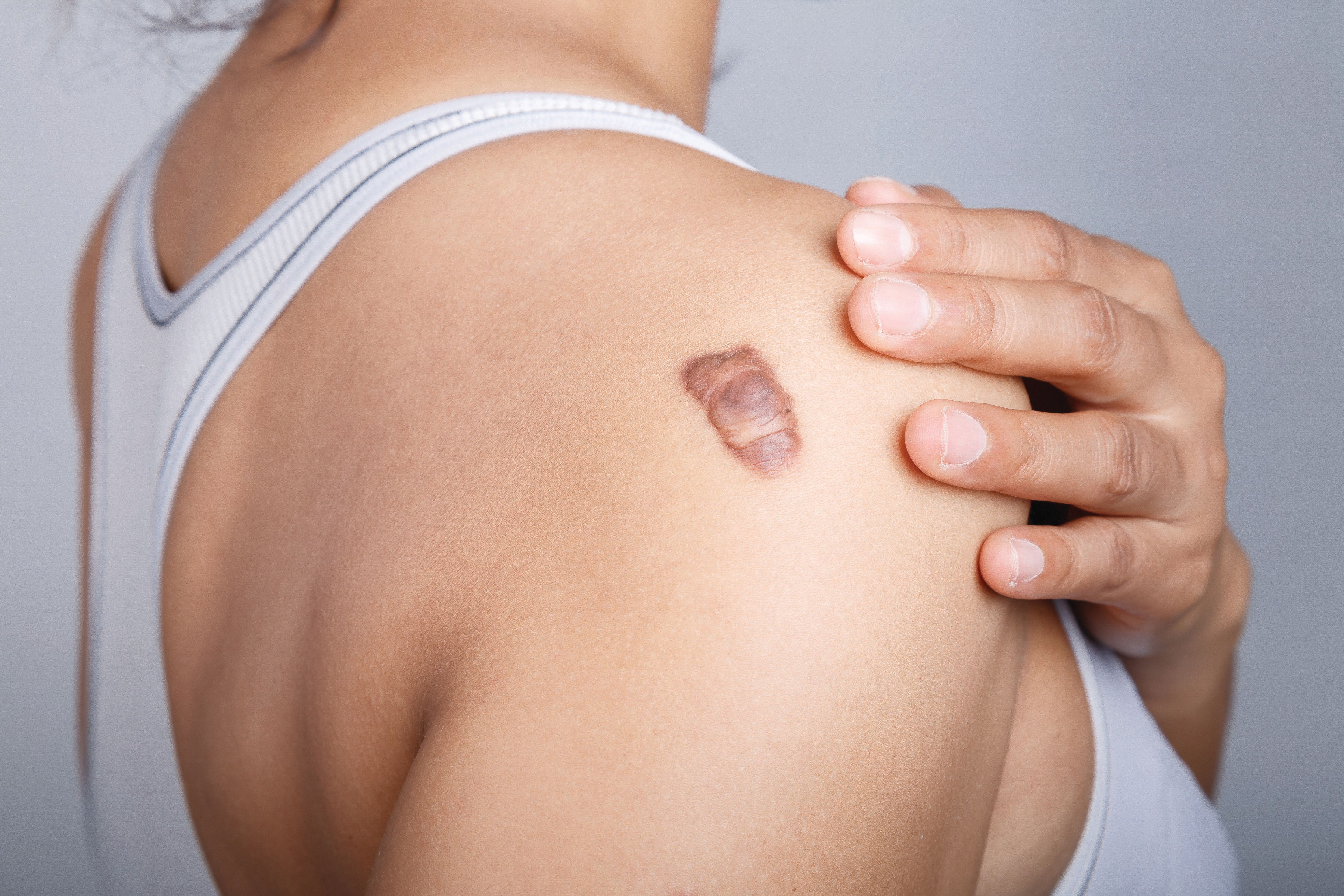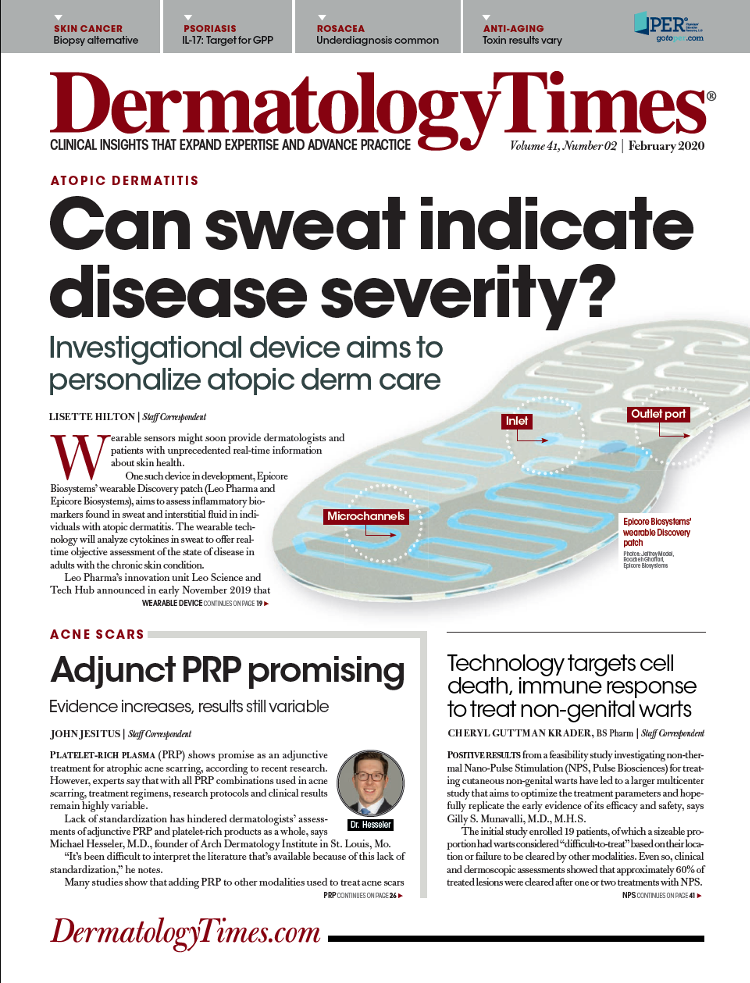- Case-Based Roundtable
- General Dermatology
- Eczema
- Chronic Hand Eczema
- Alopecia
- Aesthetics
- Vitiligo
- COVID-19
- Actinic Keratosis
- Precision Medicine and Biologics
- Rare Disease
- Wound Care
- Rosacea
- Psoriasis
- Psoriatic Arthritis
- Atopic Dermatitis
- Melasma
- NP and PA
- Skin Cancer
- Hidradenitis Suppurativa
- Drug Watch
- Pigmentary Disorders
- Acne
- Pediatric Dermatology
- Practice Management
- Prurigo Nodularis
- Buy-and-Bill
Publication
Article
Dermatology Times
An investigational drug for keloids
Author(s):
The atopic dermatitis treatment dupilumab could offer a therapeutic option for keloids, according to a case report published in the Journal of European Academy of Dermatology and Venereology.

The atopic dermatitis (AD) treatment dupilumab (Dupixent, Sanofi) could offer a therapeutic option for keloids, according to data reported in the Journal of European Academy of Dermatology and Venereology that demonstrated a patient given the drug for severe disease also experienced a dramatic reduction in the size of their keloids.
RELATED: Soliton announces keloid, hypertrophic scar study results at Maui Derm
Atopic dermatitis is an independent risk factor for keloids, which are benign growths that appear as result of abnormal collagen proliferation due to disrupted wound healing. These growths can greatly impact quality of life and are most likely to occur in African American and Asian populations.
The patient in this particular case report was a 53-year-old African American man with severe atopic dermatitis (Body Surface Area/ BSA 70%; SCORing of AD/SCORAD, 50; Eczema Area and Severity Index/EASI, 33) who also presented with two keloids: one a large prominent exophytic nodule with raised borders, the other a smaller nodule on the right popliteal fossa that had been present for more than two years. The patient had previously received more than six intralesional triamcinolone injections to treat the keloids, but these injections had little impact on the size of the keloids.
In August 2018, he began a course of dupilumab 300mg subcutaneous injections every two weeks for his atopic dermatitis, and seven months later his condition had improved significantly (BSA 8%; SCORAD, 16; EASI, 10). It was also apparent there had been significant improvement in his keloids: the amount of fibrotic plaque had approximately halved, the large keloid had shrunk with flattening of the surrounding borders and the smaller keloid had completely disappeared.
Current treatments for keloids including intralesional steroids, bleomycin and surgical excision, are of limited benefit. Keloids that resolve frequently reoccur, and there is a need for new treatment approaches.
Lead researcher Emma Guttman-Yassky, M.D., of the department of dermatology and Laboratory of Inflammatory Skin Diseases, Icahn School of Medicine at Mount Sinai, New York, told Dermatology Times the findings of the report have “the potential of changing the way we treat keloids, a painful and debilitating condition that, up to now, was primarily treated with surgery and radiation (as gold standard).”
RELATED: Genetics may play role in keloid formation
The research team is now planning to conduct a study into the effectiveness of dupilumab and other immune-based treatments in patients with keloids.
While many keloid patients have some form of atopy, Dr. Guttman-Yassky says, “We now have a few more patients without atopic dermatitis that responded to dupilumab as well, so I believe it is going to work on all keloid patients regardless of atopic dermatitis.”
The New York researchers also used realtime PCR to evaluate Th2 gene expression (IL-4R, IL-13, CCL18) in lesional and non-lesional keloid skin taken from three female African American patients with severe chronic keloids but no atopic dermatitis and compared the results with those from skin samples taken from five African American patients with healthy skin.
They found that IL-4R, directly targeted by dupilumab, was highly up-regulated in keloid lesions versus controls, IL-13 was significantly increased in lesional and non-lesional keloids versus controls and CCL18 was highly increased in keloids, particularly in non-lesional skin.
Genes involved in cartilage/bone development and highly expressed in keloids, such as cadherin 11 and fibrillin 2, were all significantly increased in keloid lesions compared with non-lesional skin and controls.
The researchers point out that their case report “is the first report of keloid improvement with dupilumab that blocks type 2-driven inflammation via IL-4/IL-13 signaling.”
MORE: Newer multi-modal approaches to treat keloids
“This study has the potential to revolutionize the way we are thinking of the pathogenesis of keloids, which were primarily thought of as abnormal wound healing response and not as having an immune-based etiology,” Dr. Guttman-Yassky says.







